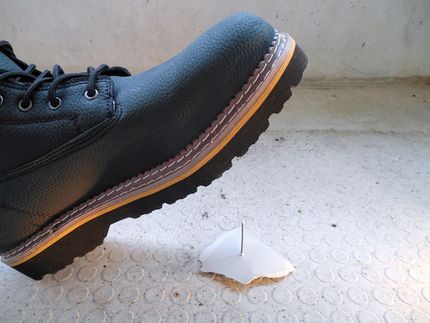PRAC recommends restricting the use of codeine when used for pain relief in children
The European Medicines Agency’s Pharmacovigilance Risk Assessment Committee (PRAC) has recommended a series of measures to address safety concerns with codeine-containing medicines when used for the management of pain in children. This follows the PRAC’s review of reports of children who developed serious adverse effects or died after taking codeine for pain relief. Most of the cases occurred after surgical removal of the tonsils or adenoids for obstructive sleep apnoea (frequent interruption of breathing during sleep).
Codeine is an opioid that is authorised as painkiller in adults and children. It is converted into morphine in the patient’s body. The children who had suffered severe side effects had evidence of being ‘ultra-rapid metabolisers’ of codeine. In these patients, codeine is converted into morphine in the body at a faster rate than normal, resulting in high levels of morphine in the blood that can cause toxic effects such as respiratory depression.
The PRAC recommended the following risk minimisation measures to ensure that only children for whom benefits are greater than the risks are given the medicine for pain relief:
- Codeine-containing medicines should only be used to treat acute (short lived) moderate pain in children above 12 years of age, and only if it cannot be relieved by other painkillers such as paracetamol or ibuprofen, because of the risk of respiratory depression associated with codeine use.
- Codeine should not be used at all in children (aged below 18 years) who undergo surgery for the removal of the tonsils or adenoids to treat obstructive sleep apnoea, as these patients are more susceptible to respiratory problems.
- The prescribing information should carry a warning that children with conditions associated with breathing problems should not use codeine.
The PRAC further recommended that, as the risk of side effects with codeine may also apply to adults, codeine should not be used in people of any age who are known to be ultra-rapid metabolisers nor in breastfeeding mothers, because codeine can pass to the baby through breast milk. The prescribing information for codeine should also include general information for healthcare professionals, patients and carers on the risk of morphine side effects with codeine, and how to recognise their symptoms.
Having assessed all the available data, the PRAC noted that the pharmacokinetic profile of codeine (how the body handles the medicine) has been studied in adults but very limited information is available in children, and the reported cases of respiratory depression with codeine indicate that children below 12 years of age may be at increased risk of morphine side effects. In addition, the limited data on the effectiveness of codeine as a pain relief in children suggest that the effect of codeine on pain is not significantly better than non-opioid painkillers such as paracetamol or ibuprofen.
Most read news
Other news from the department politics & laws

Get the life science industry in your inbox
By submitting this form you agree that LUMITOS AG will send you the newsletter(s) selected above by email. Your data will not be passed on to third parties. Your data will be stored and processed in accordance with our data protection regulations. LUMITOS may contact you by email for the purpose of advertising or market and opinion surveys. You can revoke your consent at any time without giving reasons to LUMITOS AG, Ernst-Augustin-Str. 2, 12489 Berlin, Germany or by e-mail at revoke@lumitos.com with effect for the future. In addition, each email contains a link to unsubscribe from the corresponding newsletter.















































